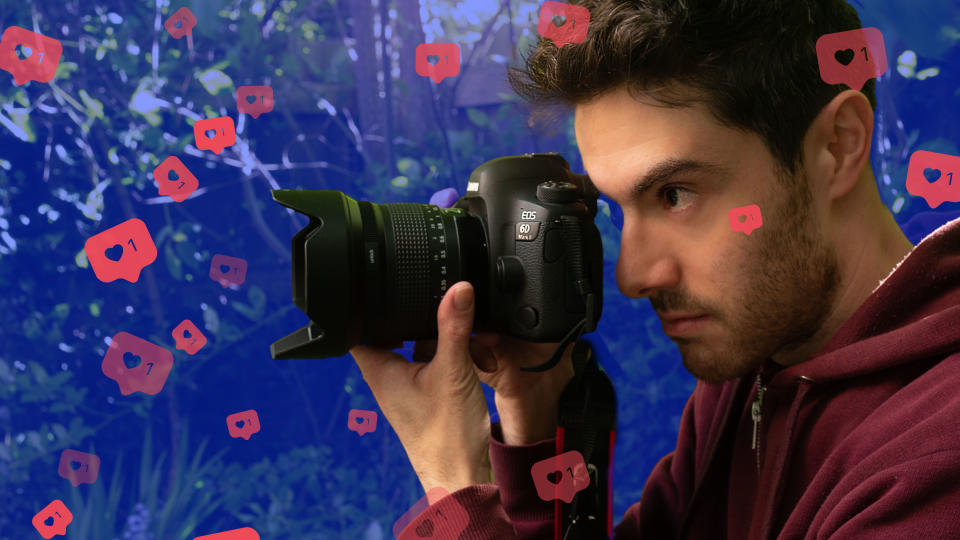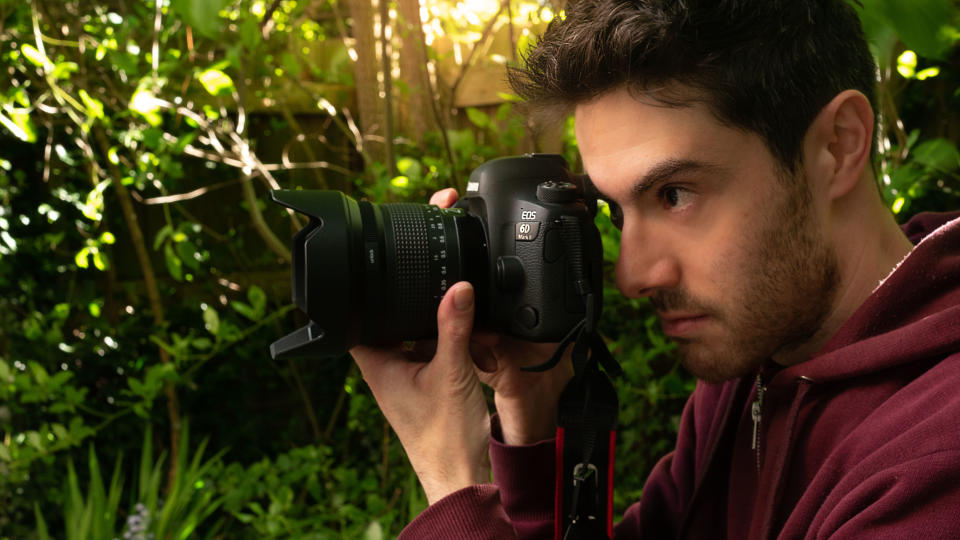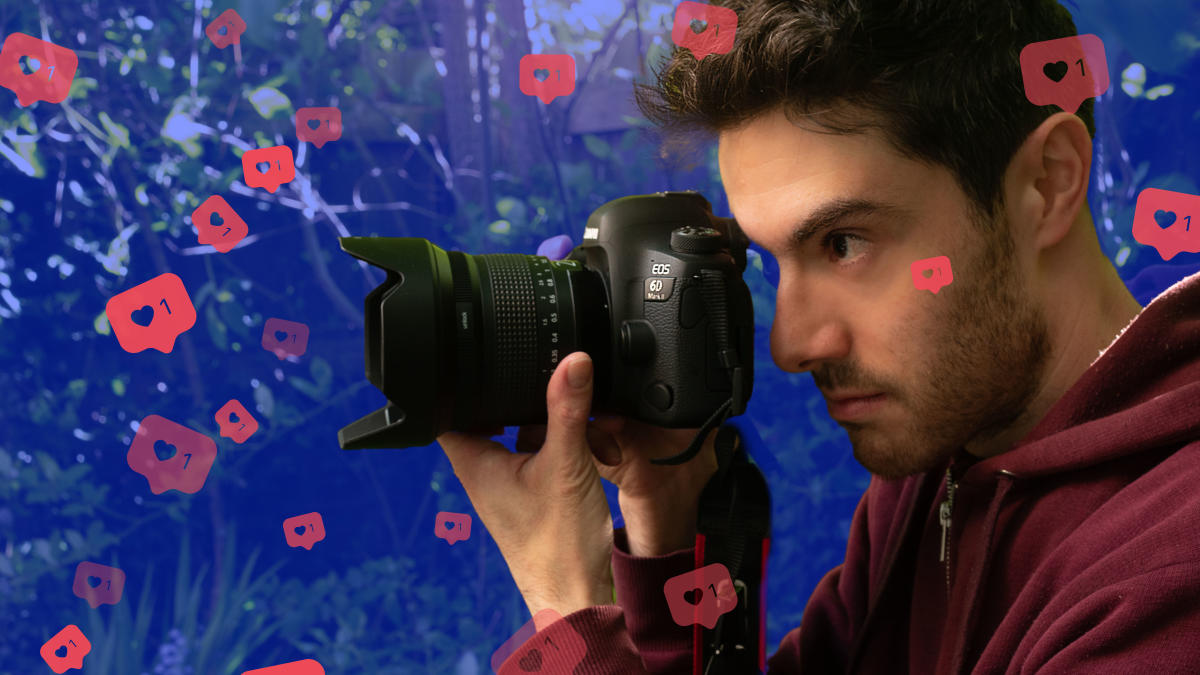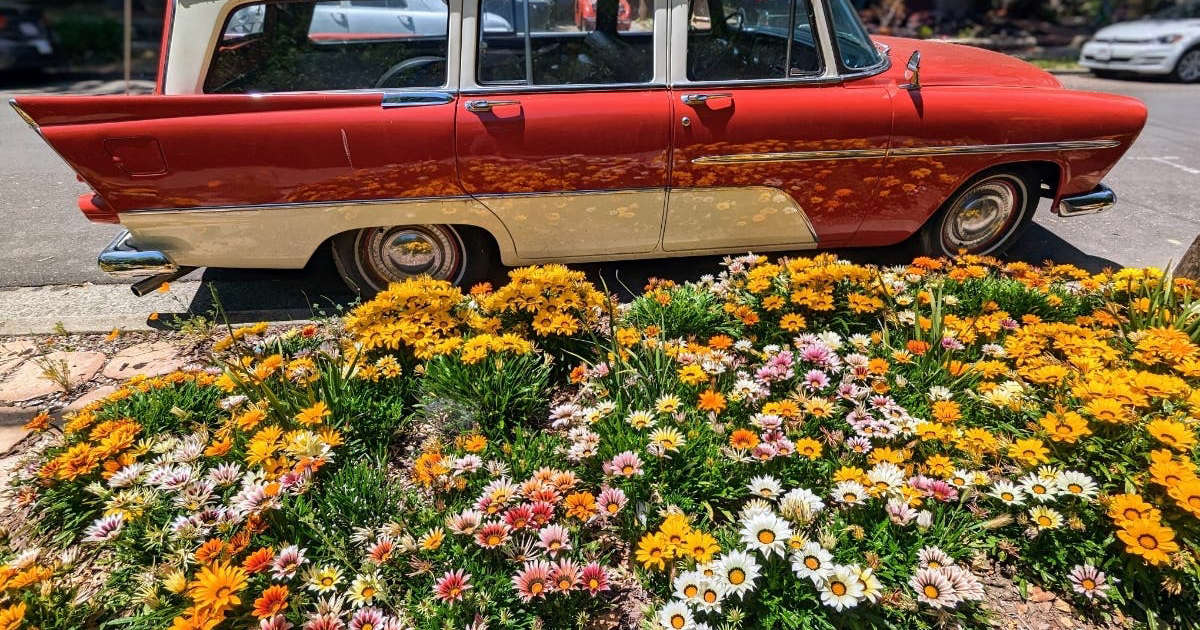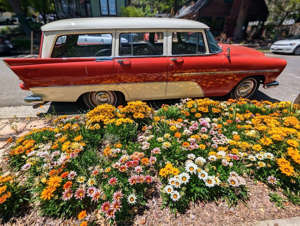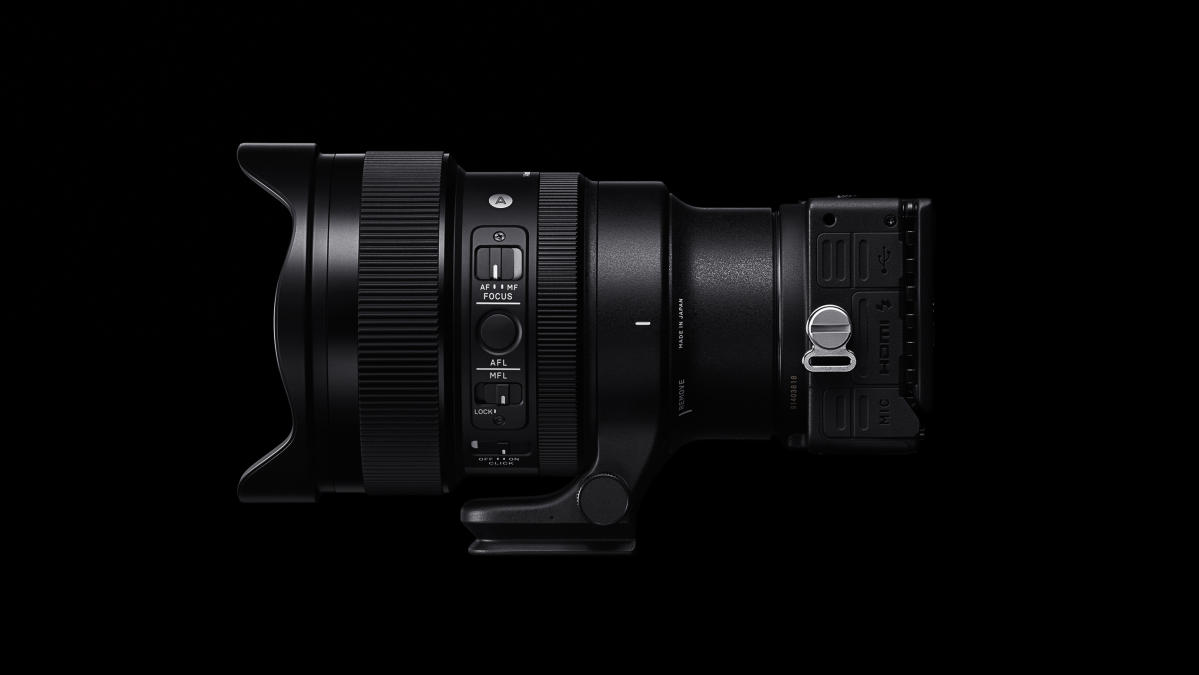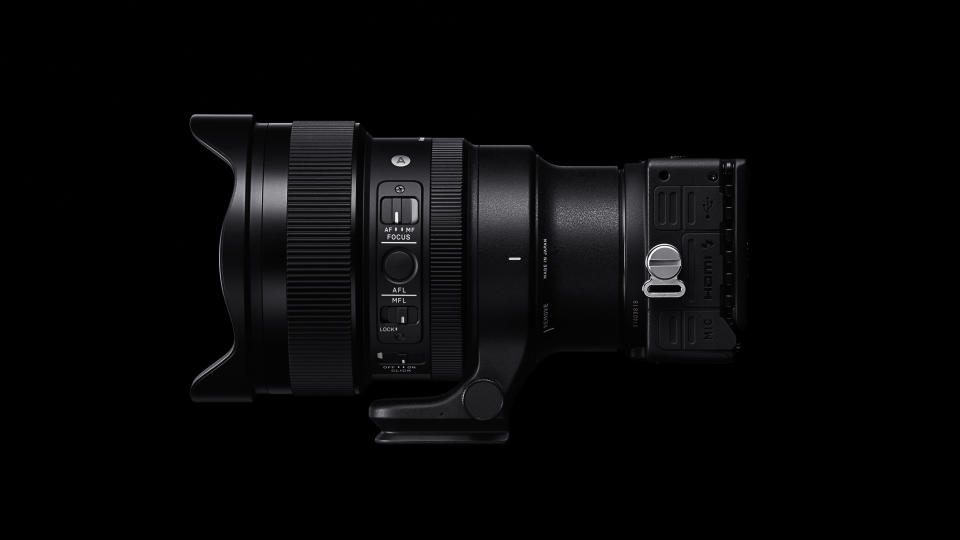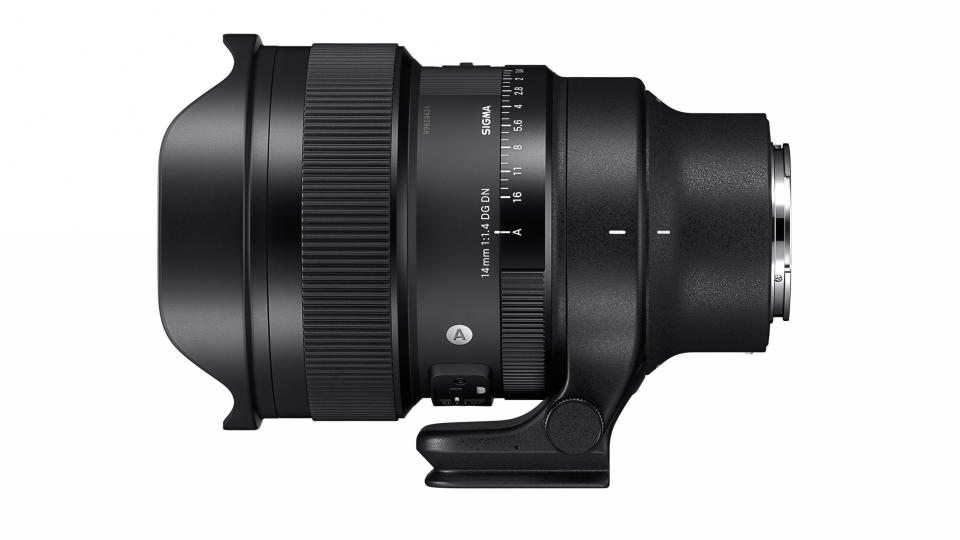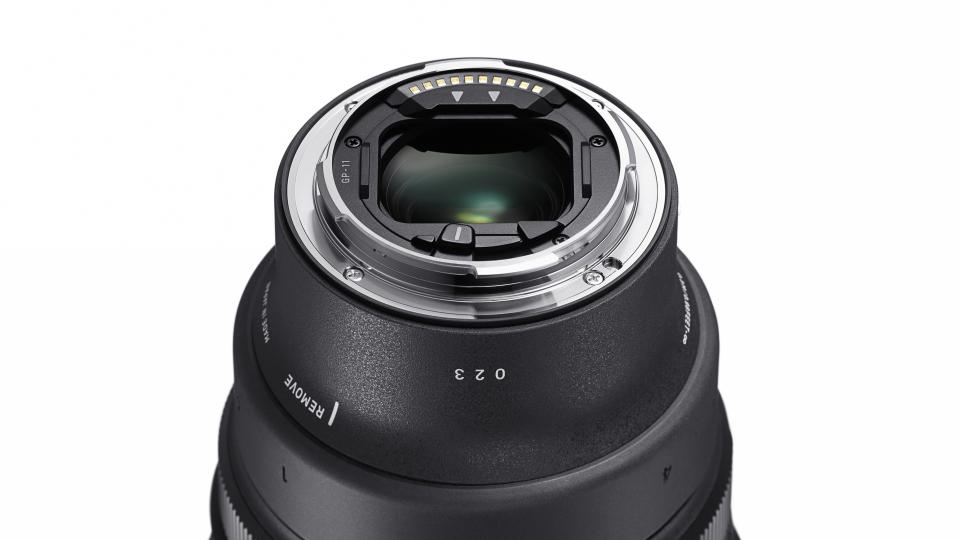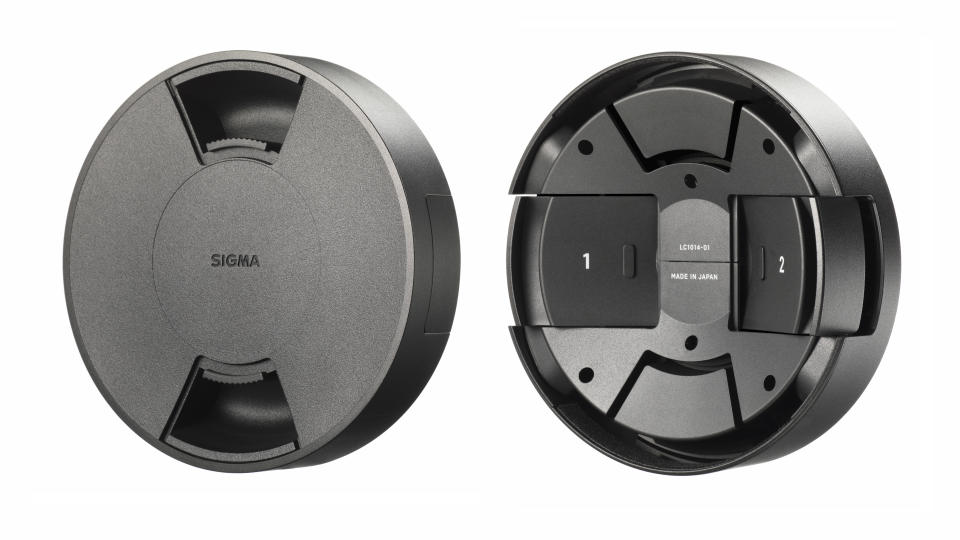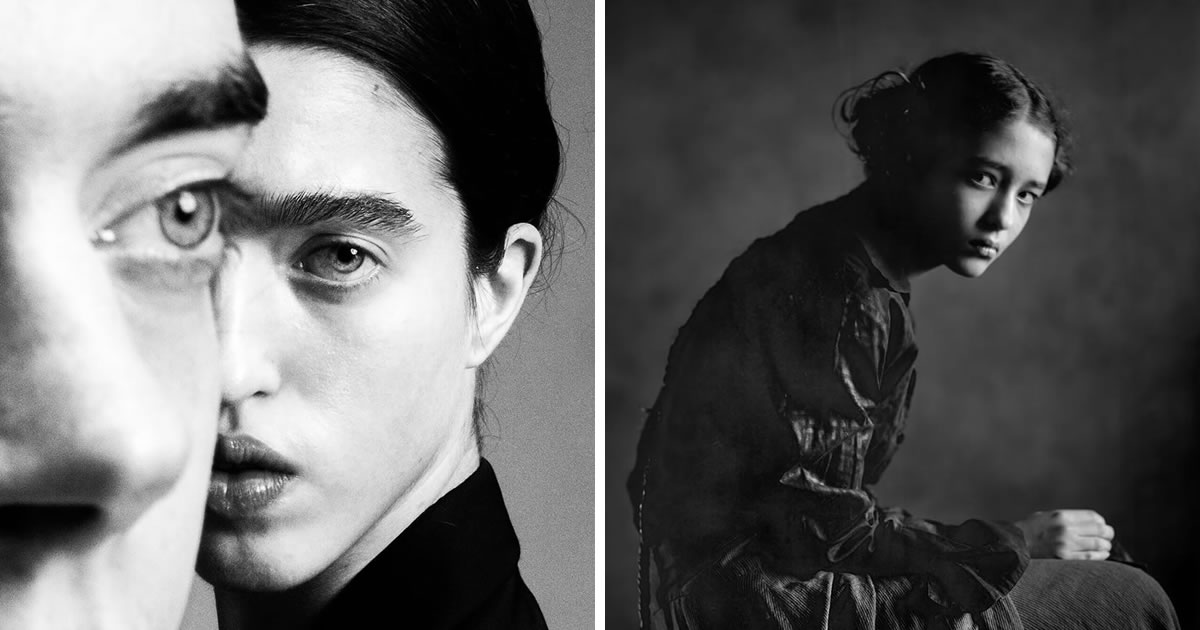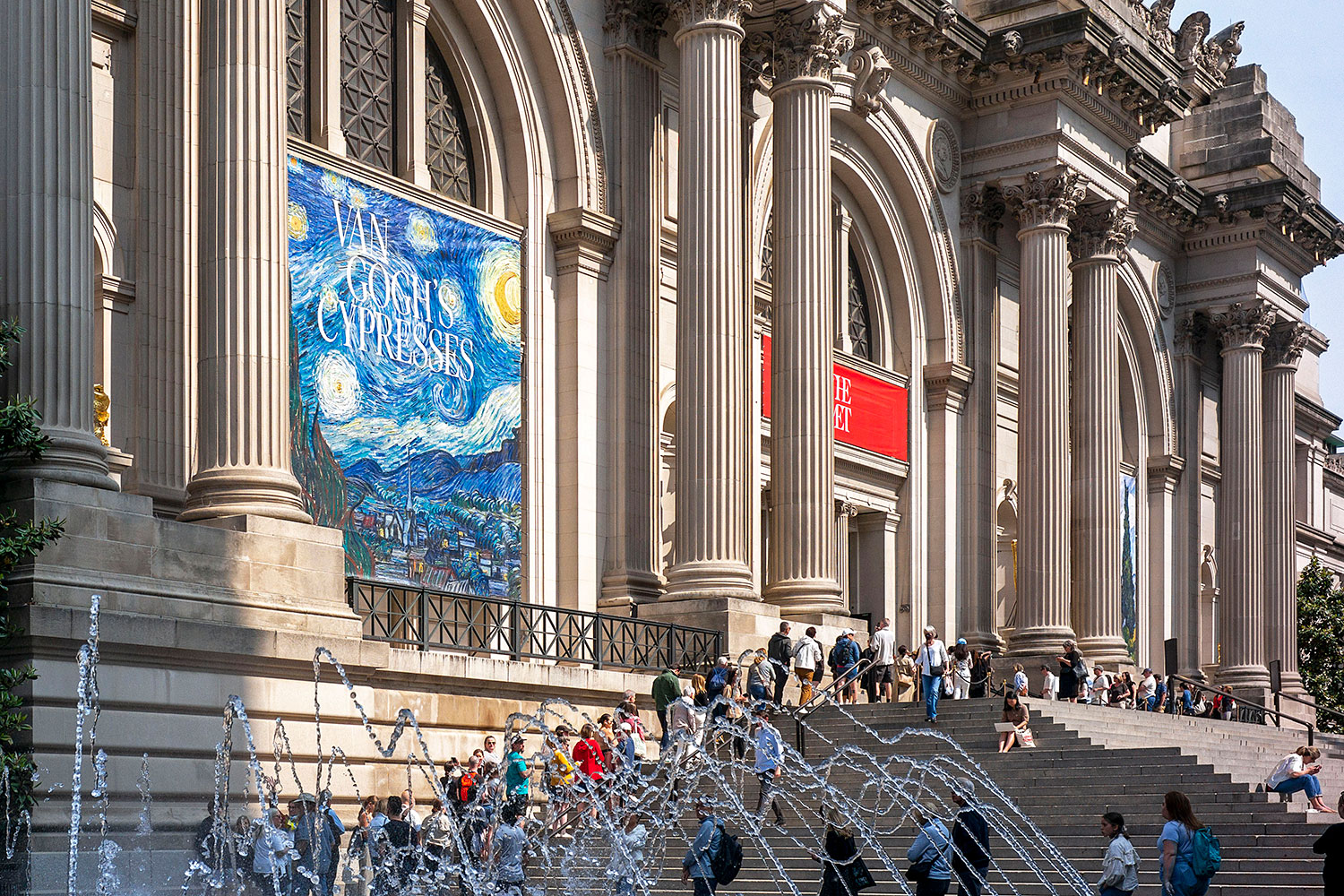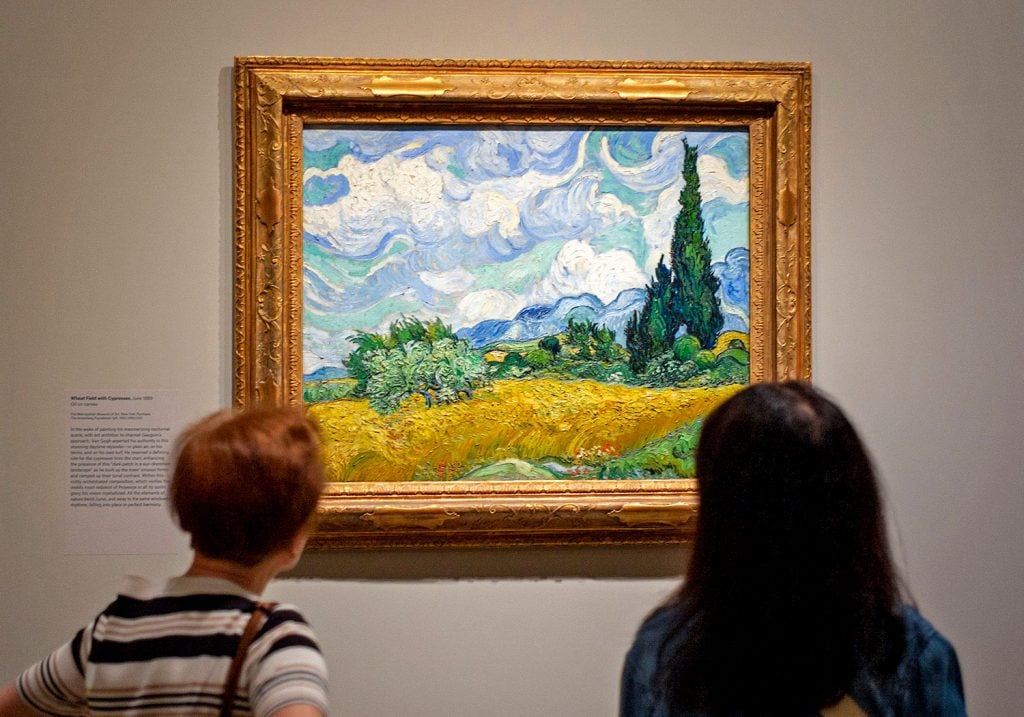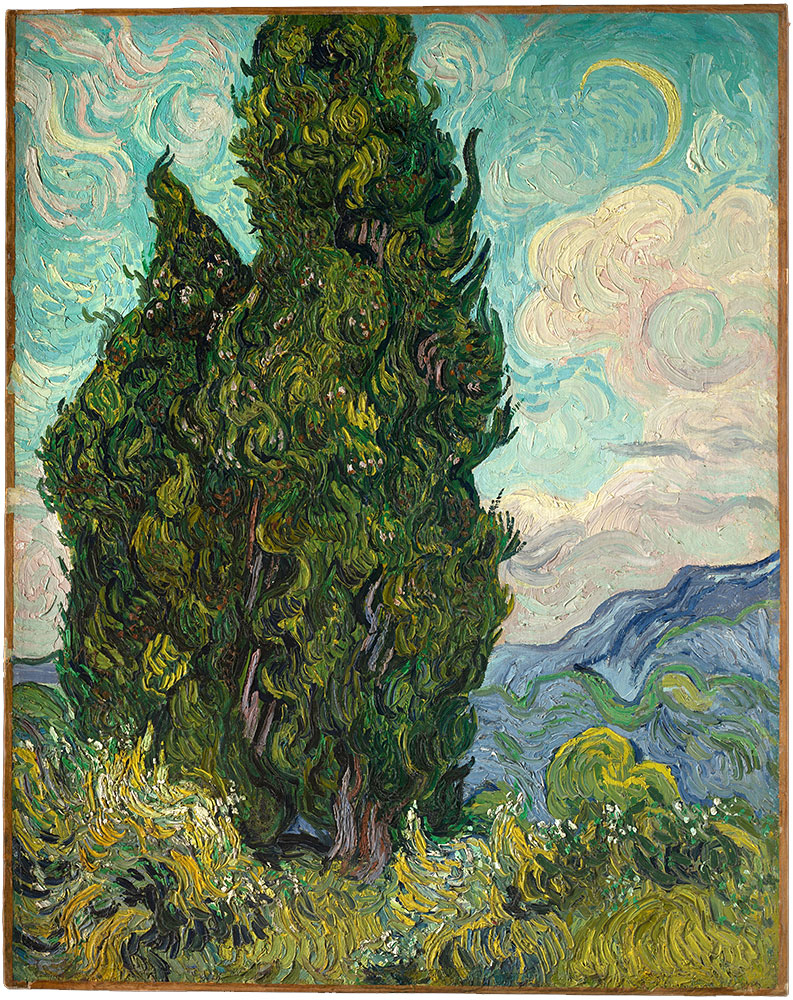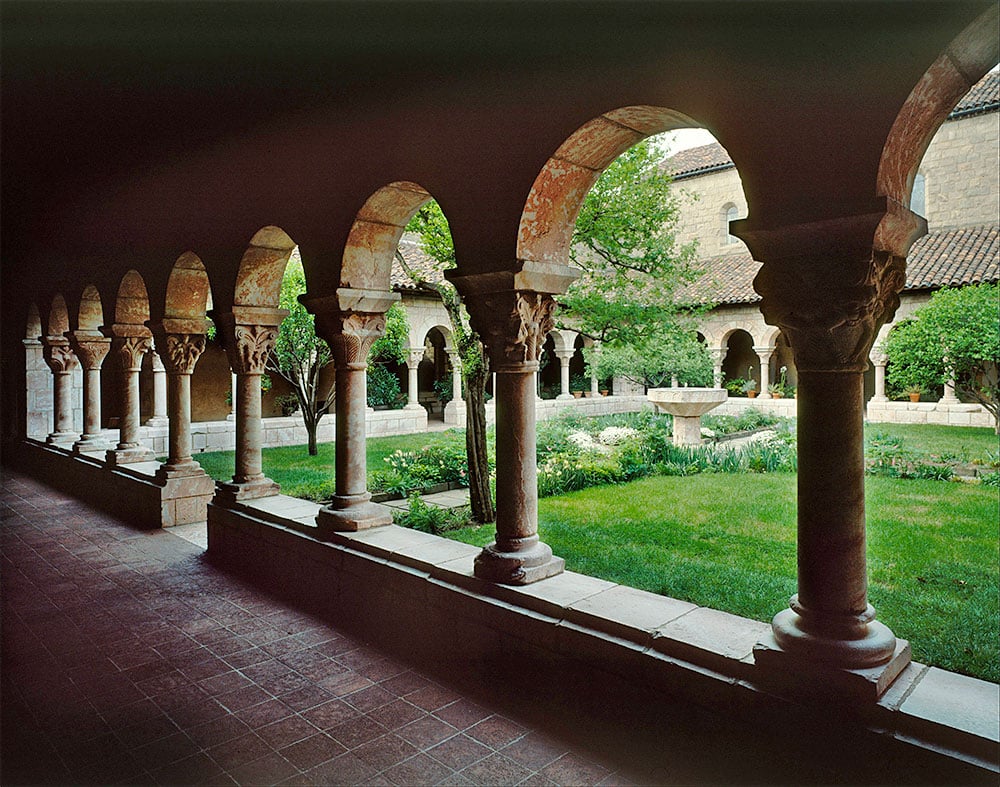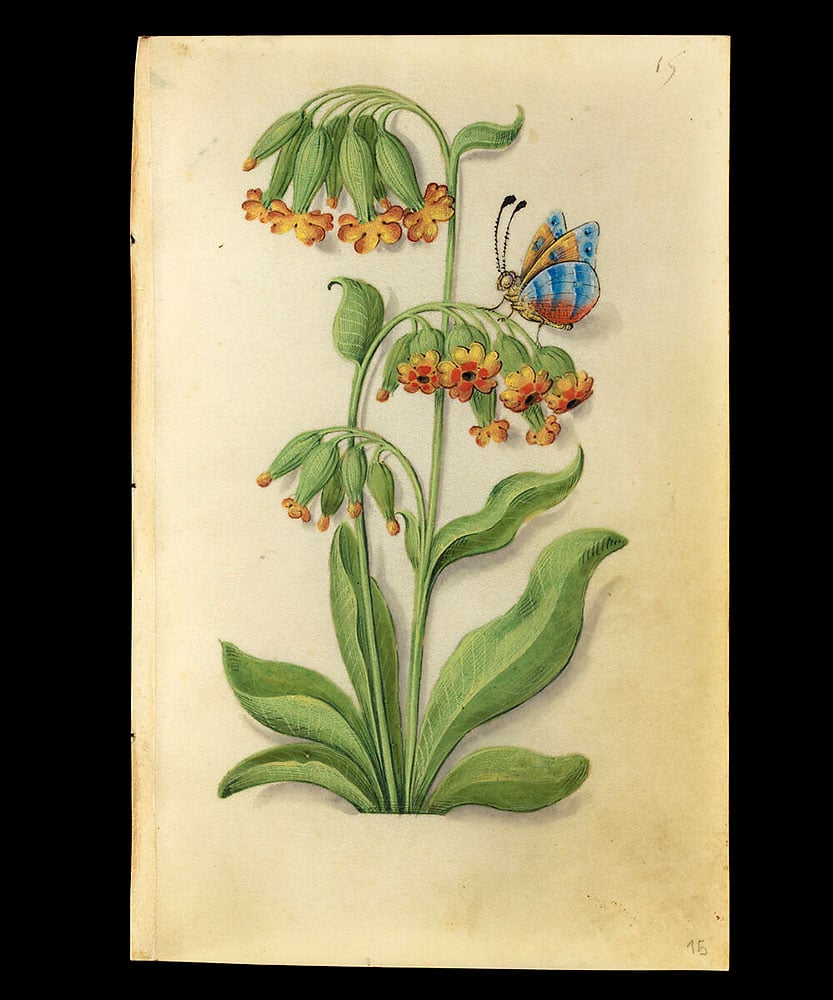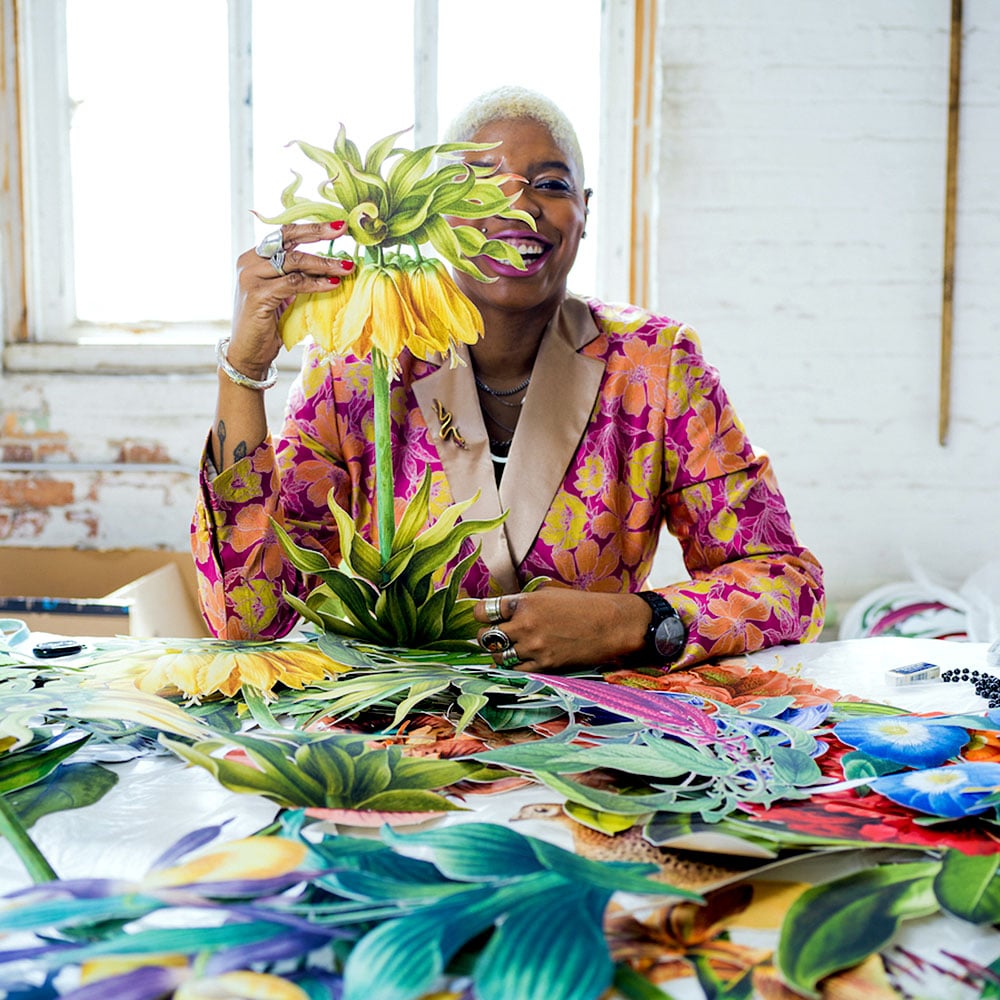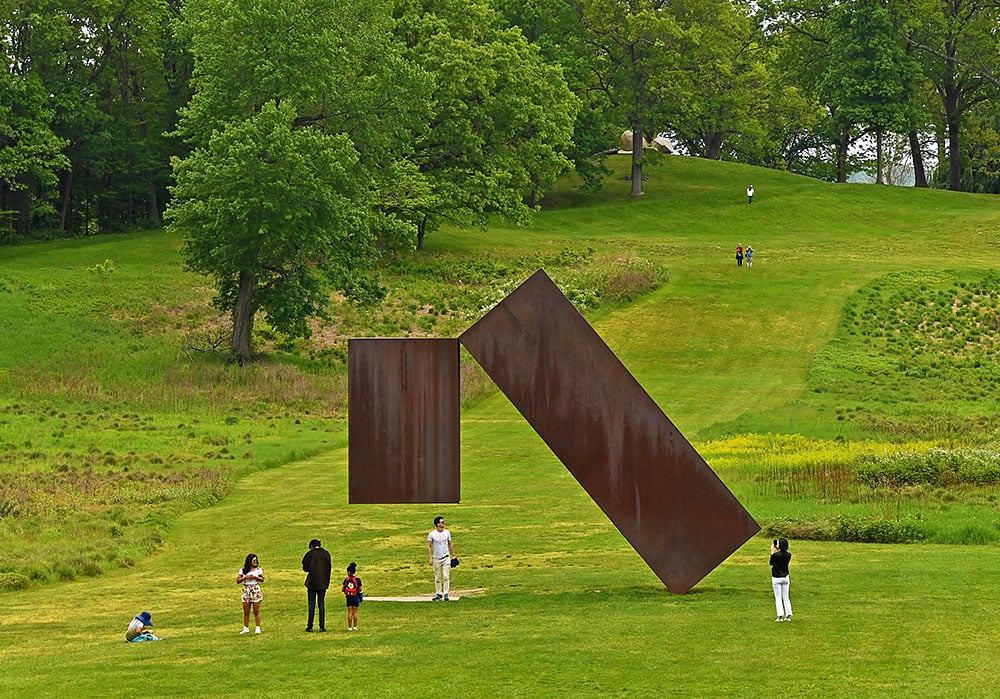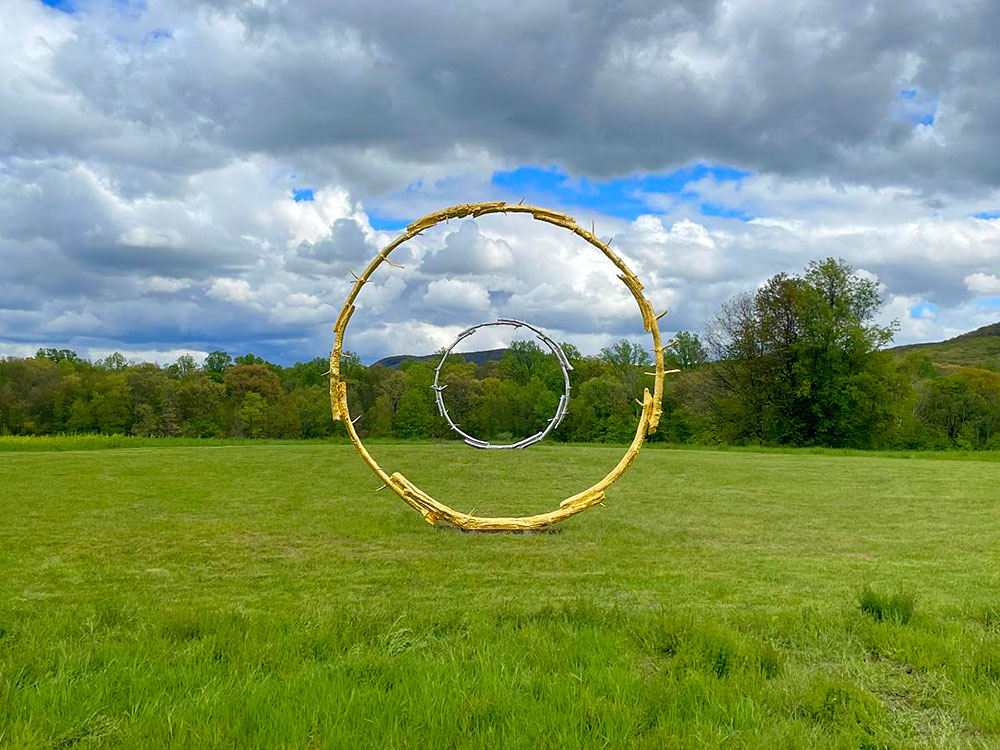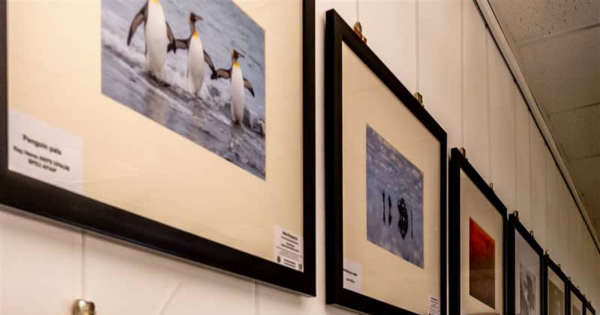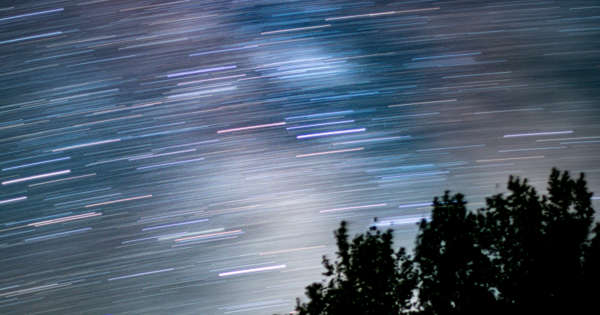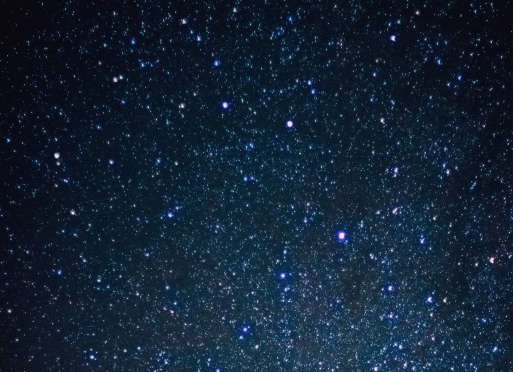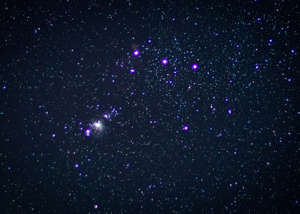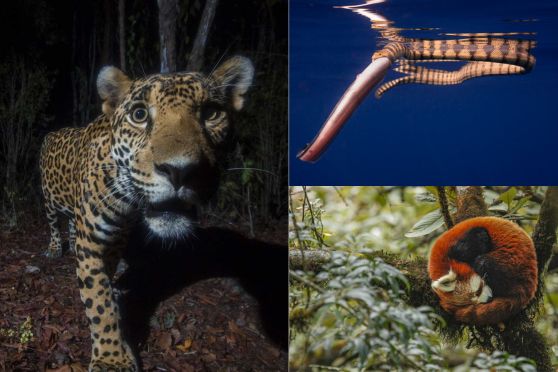Here are the 25 exceptional photographers who have emerged as the winners of ‘AAP Magazine #31: Portrait.’
As Henry Cartier-Bresson once said, capturing a portrait is a challenging endeavor, requiring the photographer to bridge the gap between a person’s exterior and their inner self. Portrait photography encompasses a vast array of styles and techniques, ranging from the straightforward identification of a subject to the delicate exploration of their emotions. It transcends traditional studio portraits and ordinary family snapshots, evolving into a distinct genre that allows photographers to unleash their boundless creative potential.
A portrait possesses the power to evoke a multitude of reactions, from descriptive and revealing to embellishing, questioning, or unsettling. However, with countless faces in the world, we can only present a few within the pages of this new issue of AAP Magazine. In this edition, we are honored to showcase the perspectives of 25 photographers hailing from 11 different countries across four continents.
Each of these talented individuals shares their unique personal narratives and distinctive approaches to the art of Portrait Photography.
Continue scrolling to discover the fascinating winning images!
You can find more info about AAP Magazine Awards:
#1 The Winner: The Series “Perspective” By Nanda Hagenaars (Netherlands)
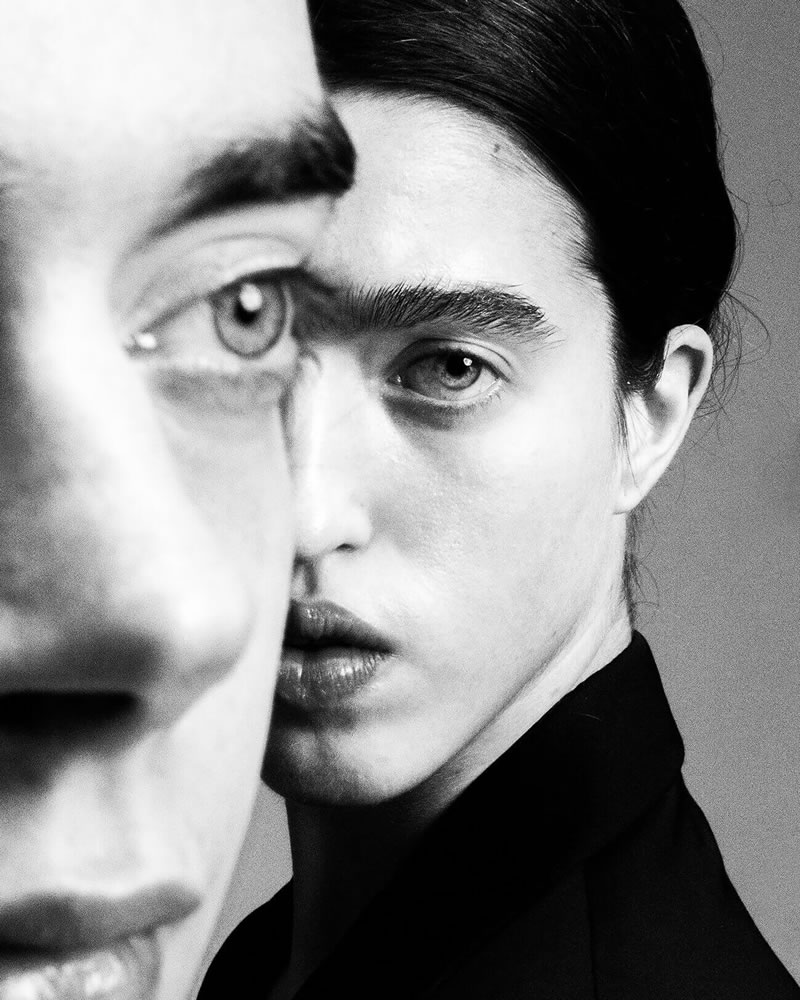
Portrait where I shift my perspective and try new ways of looking and photographing. Squeezing one eye, finding composition and contrast.
#2 The Second Place Winners: The Series “Alex” By Anna Hayat and Slava Pirsky
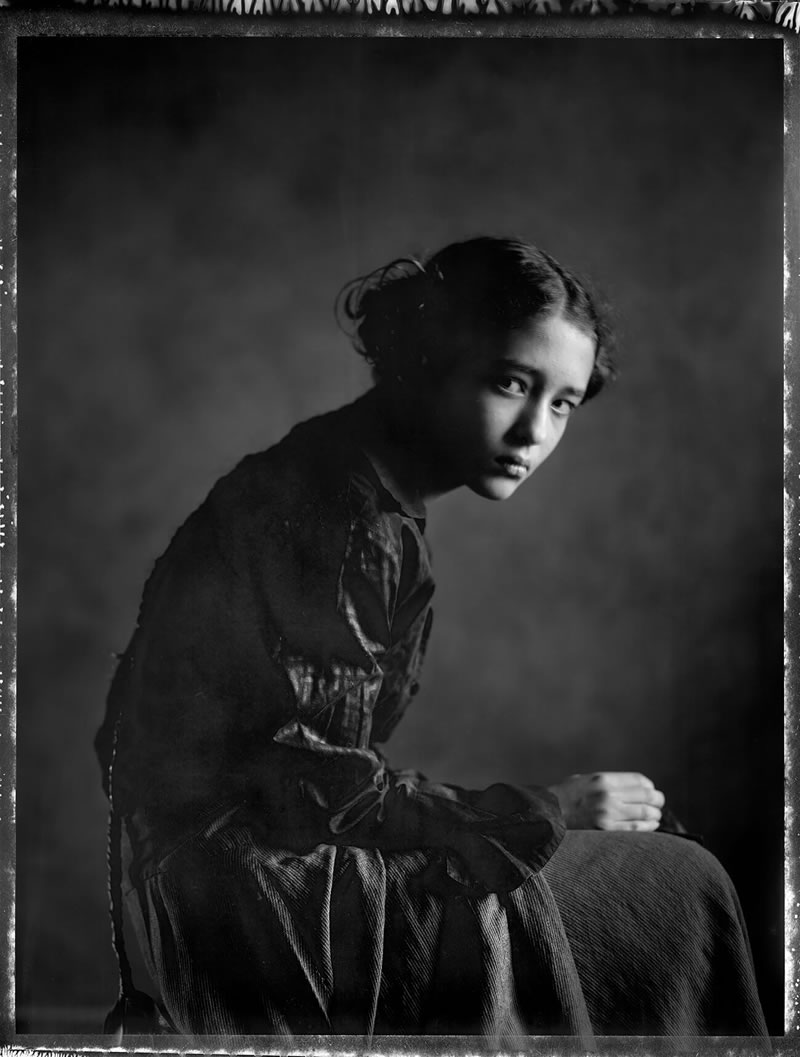
The photograph Daughter of Chinghis Khan is a part of our larger project, in which we captured our daughter from birth to adulthood. Through it, we explore the process of growing up and the development of one’s personality.
#3 The Third Place Winner: The Series “Anomium” By Matt Findley (USA)
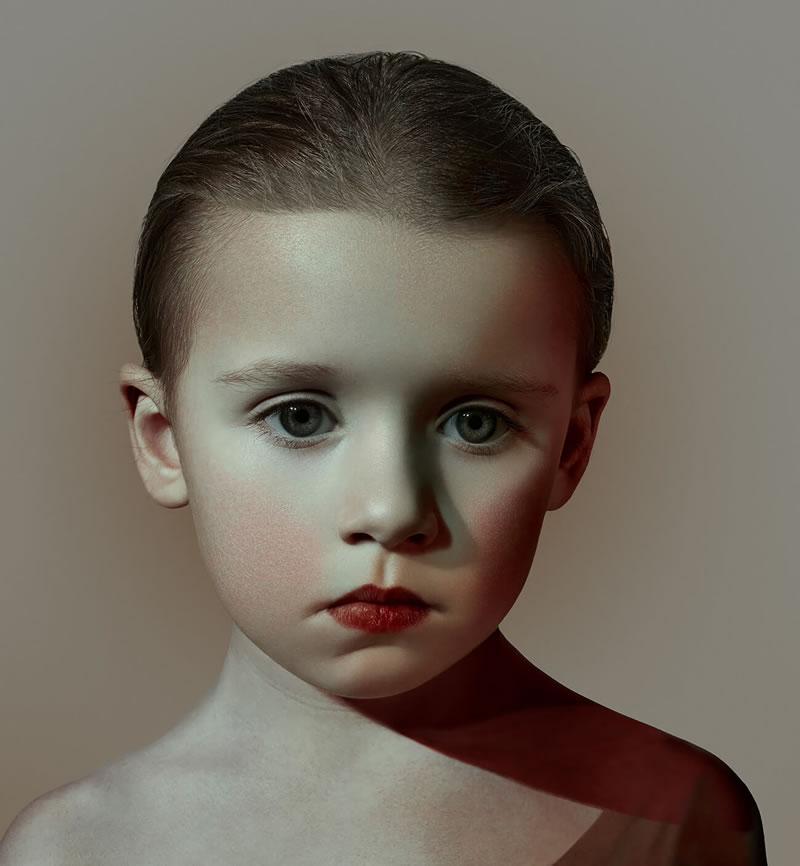
The Anomium series is informed by the concept of Higonnet’s knowing child – the idea that childhood is a time of both innocence and wisdom, a brief window blessed with this innocence but burdened by the knowledge of an unkind world. This series examines these ideas and seeks to evoke a sense of transformation that is at once haunting while retaining elements of this fading purity, and to serve as a testament to the resilience and beauty of childhood in the face of the journey towards maturity.
#4 Merit Gallery Winner By Lisa McCord (USA)
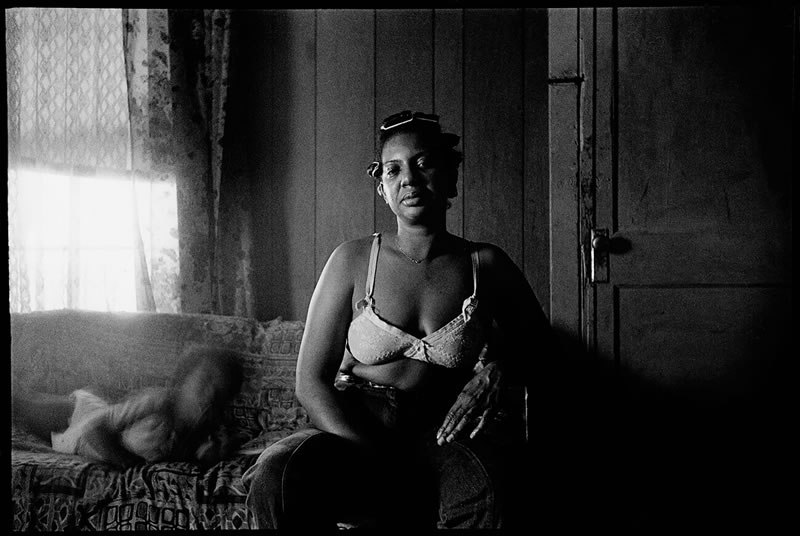
Frances was one of the first people I met on the farm with whom I didn’t already have a long-standing relationship. She welcomed me into her home, and we became good friends. I would go back to visit her often and photographed her many times. This is one of the few portraits I made of her using my tripod. When I looked at the film later, I realized the baby couldn’t hold still. From an outsider’s perspective, it may seem strange to make a formal portrait of someone in their bra, but it was normal for women on the farm to dress this way in their homes. The Arkansas heat and humidity led us to seek comfort any way we could. I ended up photographing many women this way.
#5 Merit Gallery Winner By Alain Schroeder (Belgium)
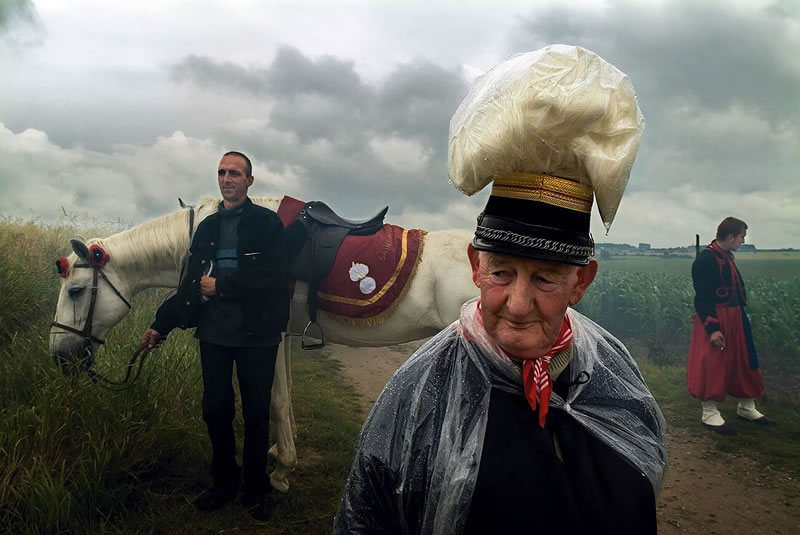
Belgium, Namur Province, Morialmé (Marche Saint-Pierre), the Marches of the Entre-Sambre-et-Meuse are on the Unesco List of Intangible Cultural Heritage. This march takes place primarily in the countryside, notably the route from the village center to the Poucet chapel. The Marchers are dressed in traditional costume consisting of a blue smock, white pants and red scarf.
L’Entre-Sambre-et-Meuse is a historical region that lies between the Sambre and the Meuse rivers in Wallonia Belgium. Situated between Germany and France, two fiercely combative nations, the area endured incessant and often devastating passages for centuries.
The processions that date back to the 13th century, traverse the countryside carrying the relics of saints preserved with great devotion accompanied by armed escorts. During the First Empire, soldiers from Napoleon’s army with their sumptuous uniforms joined the marches to defend cities and honor community ceremonies both civil and religious. The tradition continues today with hundreds of marchers dressed in Napoleonic military attire.
From May to October, processions and marches take place primarily in the region between the Sambre and the Meuse rivers south of the cities of Charleroi and Namur.
Inscribed in 2012 on the List of the Intangible Cultural Heritage of Humanity (UNESCO), they owe their enduring popularity not only to faith and historic imitation, but to the magnificent landscapes of this isolated region where customs and traditions have remained unchanged for centuries.
#6 Merit Gallery Winner By Erberto Zani (Italy)
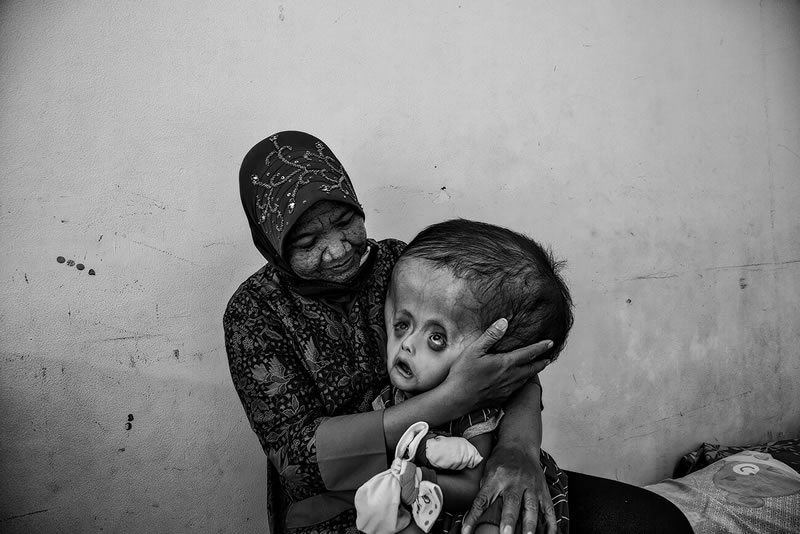
Naomi, 5 years old, was born with hydrocephaly. At age of 20 days, she was adobt by Wisma Kasih Bunda Foundation (Semarang, East Java, Indonesia, 2023).
Minamata’s disease is caused by chronic mercury poisoning.
This metal, used in hundreds of illegal gold mines in the forests of Java, Indonesia, is contaminating the environment. Miners, who have worked for years in contact with mercury, have developed neurological degenerative diseases. But the spillage of gold mining waste has contaminated also the aquifers upstream: the villages downstream from the mines, have for years used water with mercury for domestic use and to irrigate crops. On Java island, are dozens of cases of poisoning: pregnant women have passed mercury to the fetus without their knowledge, causing irreversible damage to the unborn child with morphological and anatomical abnormalities. The disease is manifested by neurological problems, difficulty in movement, muscle weakness, visual, auditory and cognitive deficits, hydrocephaly. Paralysis or coma can also occur until death. These photo are part of the long-term project Venoms on the subject of pollution created by humans.
#7 Merit Gallery Winner By Lori Pond (USA)
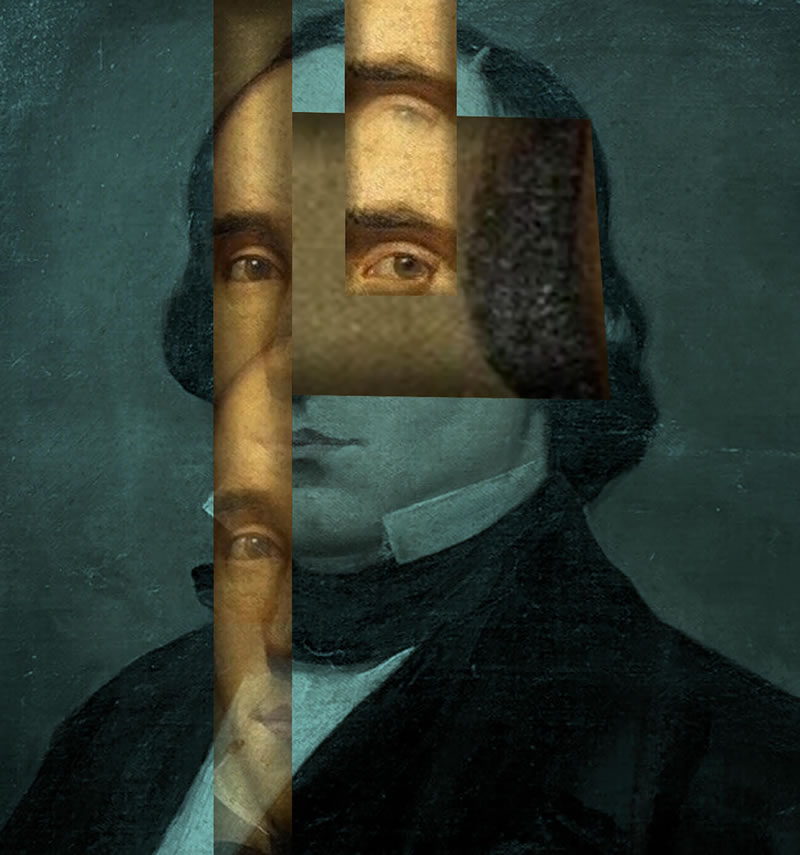
‘As I See It’ comprises portraits that attempt to duplicate what my brain is seeing, opposed to what my eyes see. With this project, I’m looking at the human face as the starting point. I then try to see that face as my brain would, putting the most important features in the foreground, and bringing the least important to the background. From what I’ve read, the brain quickly sizes up a new face into just a few categories: 1) Will it hurt me? 2) Will it eat me? 3) Will it love me? The “sizing up” occurs before I can consciously register it.
#8 Merit Gallery Winner By Frank Baudino (USA)
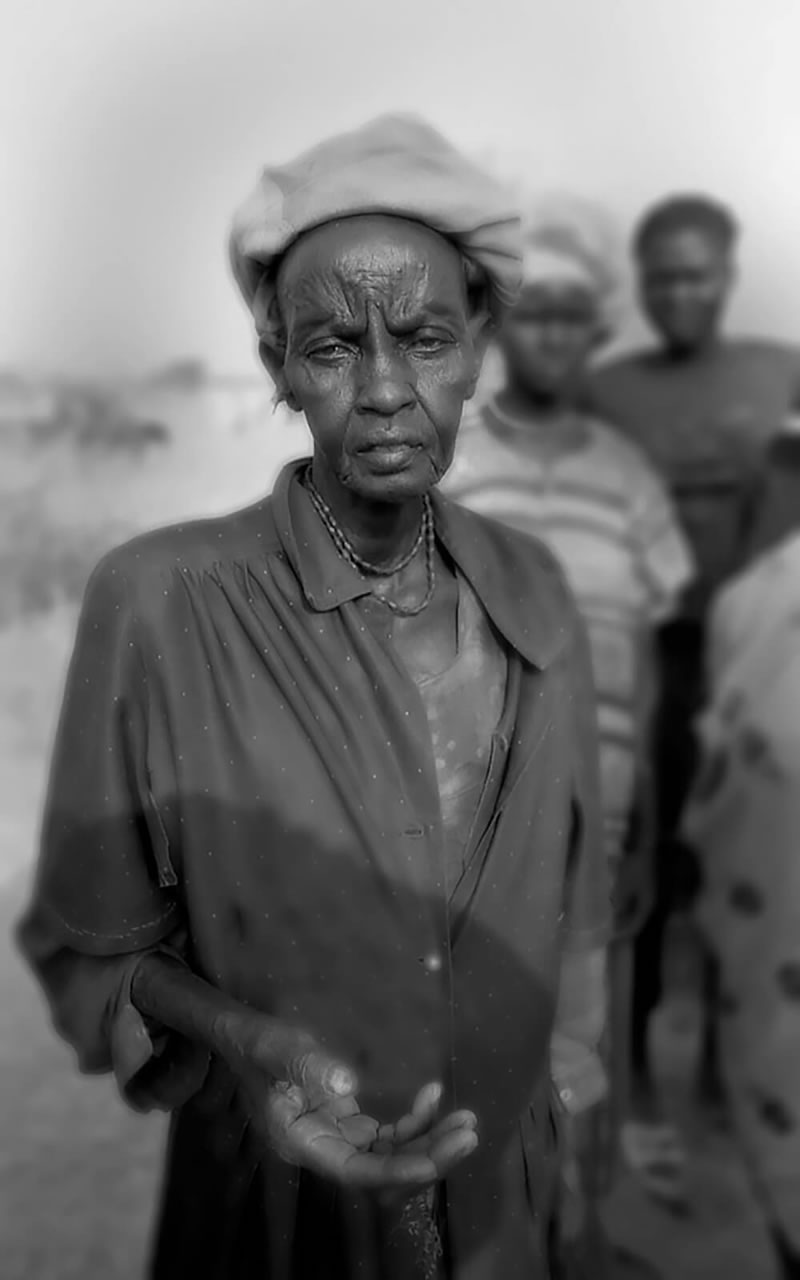
These portraits were obtained while I had the privilege of serving the people of what is now South Sudan 18 years ago. I worked with Doctors Without Borders and was in charge of the therapeutic feeding center in the village of Akuem. The Sudanese, largely members of the Dinka tribe, generously allowed me to photograph them and tell their story. The purpose of this series is to bear witness to the human suffering that occurs in Sudan and surrounding countries due to famine and poverty.
A vignette of my work in Sudan was published last fall in “Intima: A Journal of Narrative Medicine.
#9 Merit Gallery Winner By Charles Shotwell (USA)
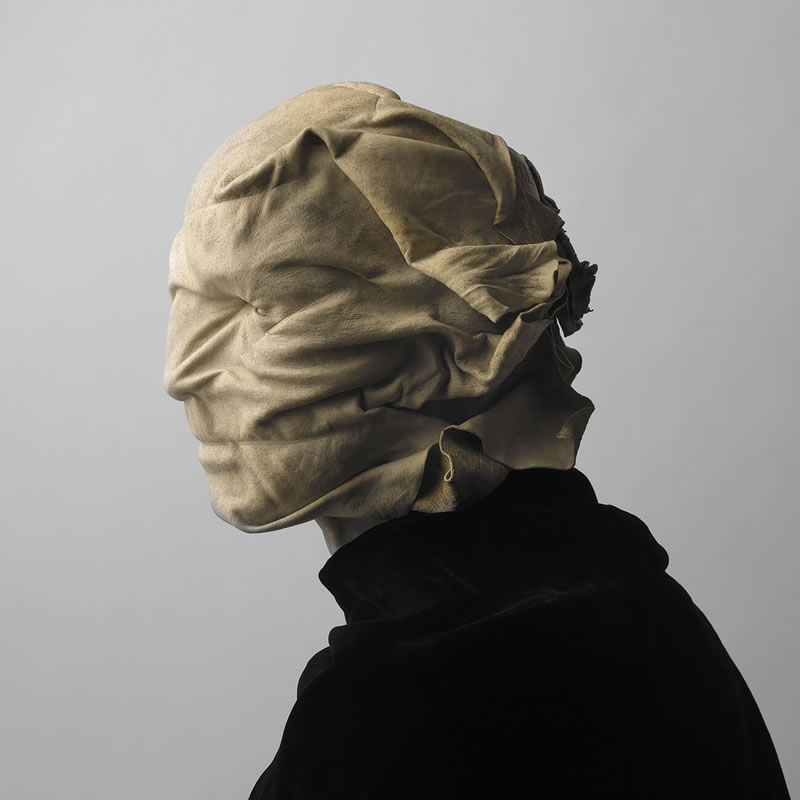
A wet Chamoi wrapped around a manikins head , held on by rubber bands till dry. No retouching was used.
#10 Merit Gallery Winner By Roberta Vagliani (Italy)
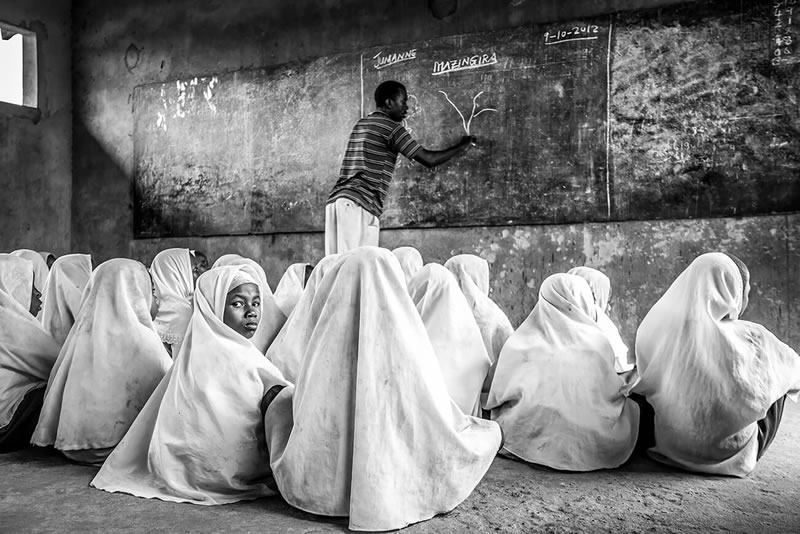
Nelson Mandela said «Education is the most powerful weapon you can use to change the world». This image was taken in a school in Zanzibar, where there are no desks, chairs or school supplies. All these little girls own is a notebook and their own memory. Knowledge is passed on to them by a single master. In every person there is the possibility to transform the world.
#11 Merit Gallery Winner By Hugo Thomassen (Netherlands)
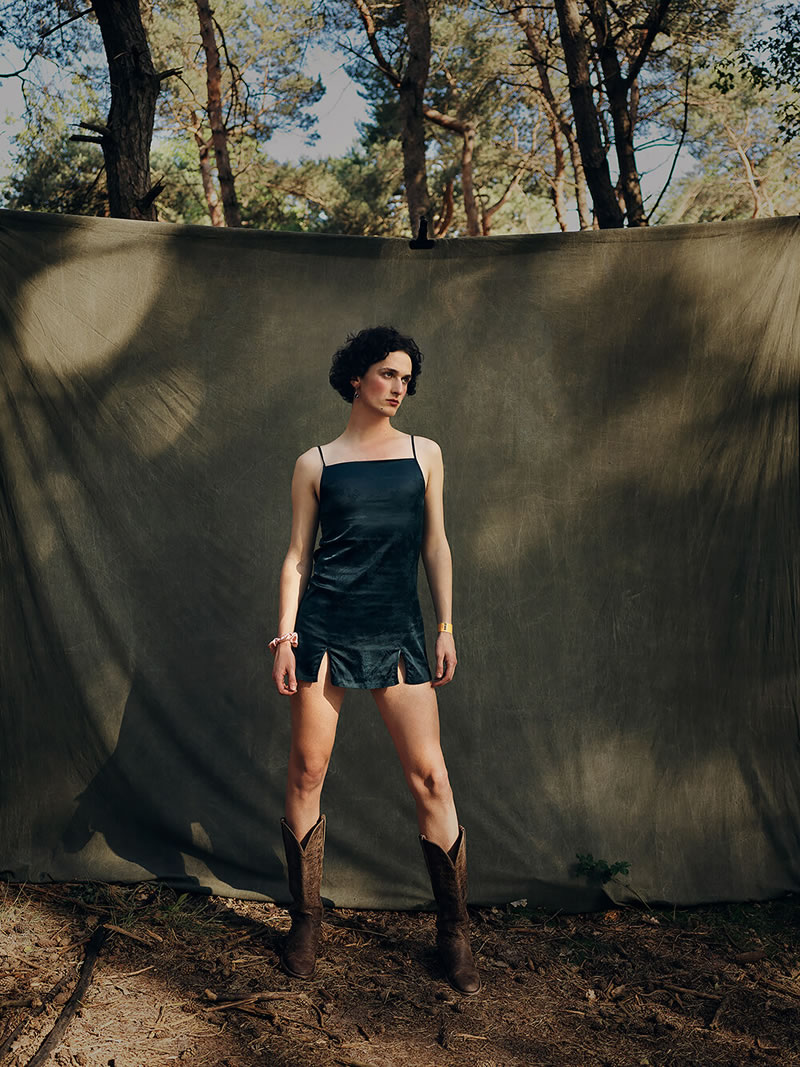
Walt Disco, with lead singer James Potter, is a Scottish post-punk band known for their unique style and powerful performances. The band members stand up for LGBTQ+ rights and freedom, celebrates individuality and selfexpression and encourages viewers to embrace their own creativity and unique identity. James Potter stated that he hopes Walt Disco can be a source of inspiration and empowerment for other queer people. He also expressed a desire to use his platform to raise awareness of the issues facing the LGBTQ+ community, such as discrimination and lack of representation. Walt Disco’s serves as a powerful statement of individuality and liberation and promotes inclusivity and acceptance for all.
#12 Merit Gallery Winner By Annemarie Jung (Luxembourg)
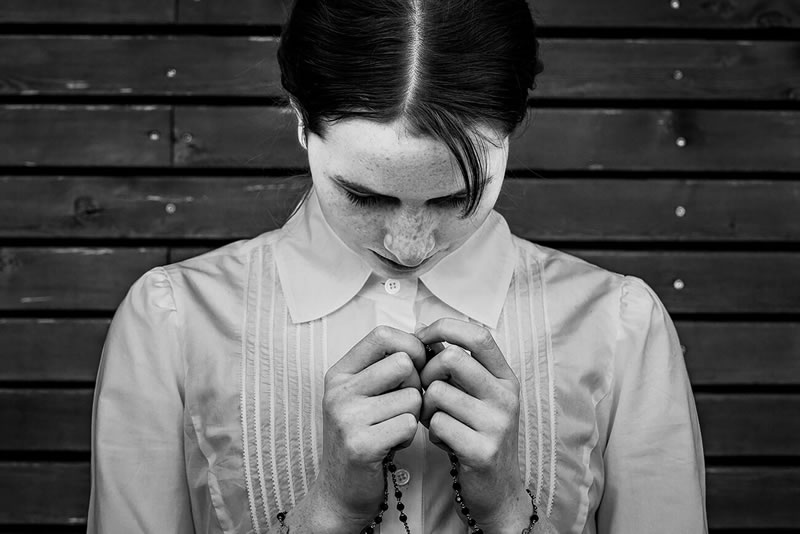
The objective of the series is to depict the impact of dogmatism on practical life, and to provoke the audience’s self-inspection about their own beliefs.
#13 Merit Gallery Winner By Ian McFarlane (USA)

On a hot summer day I meet with Amanda and her daughter Eva that their home. We did photos in their front yard using only natural light. I was amazed at the look Eva gave me in every frame. I was so happy to be able to create this image for them.
Three years ago my sister and I had to place our mother in a home for those suffering from server dementia. My mother no longer recognized me or my sister. We had lost her to another reality, she was not coming back . My goal for this series was to create memories for these mothers and daughters to have and remember each other and for me to face the grief I had just begun to process, letting my mother go.
#14 Merit Gallery Winner By Nicola Ducati (Italy)
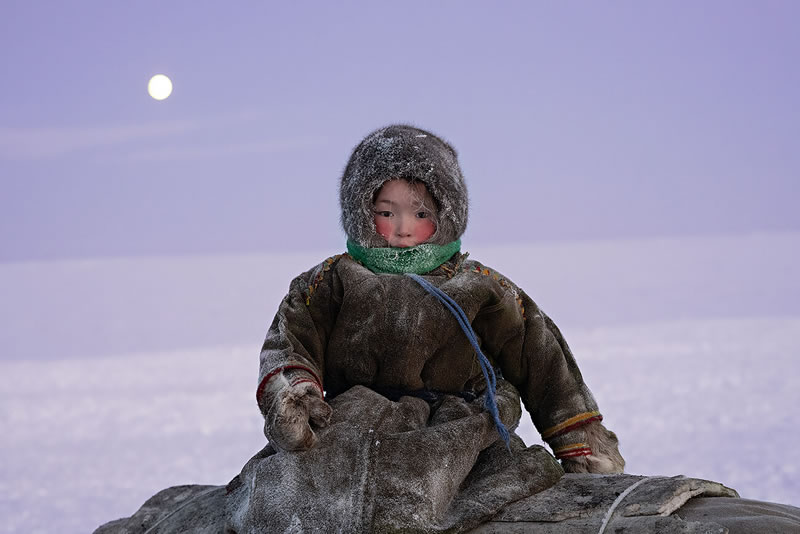
The thousand shades of white told through a trip to the Yamal, the icy Siberian peninsula in the far north of the Russian Federation. This land is inhabited by the Nenets people, nomadic reindeer herders who, guided by the seasonal cycles and the needs of their herds, migrate incessantly in an infinite circle of movements between ice, frozen rivers and neverending winds in search of new pastures in the most remote tundra. The hostile environment did not stop their innate adaptability and gave them prosperity for millennia.
#15 Merit Gallery Winner By Prescott Lassman (USA)
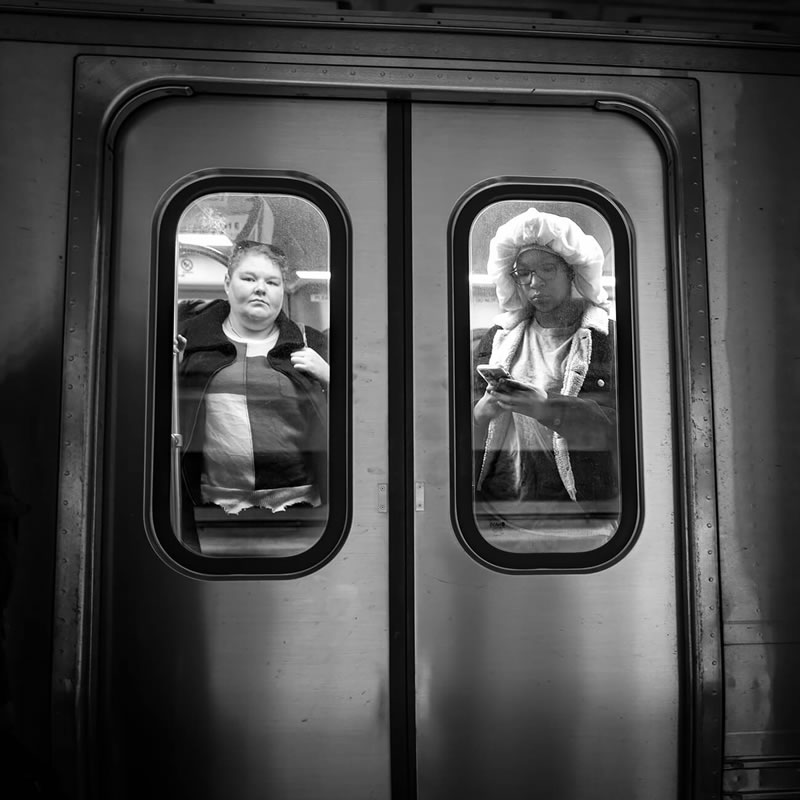
Off Kilter presents portraits that are slightly askew. In many photographs, the subjects find themselves in situations that are mildly uncomfortable. In others, the portrait may create vague feelings of discomfort in the viewer. In either case, the intent is to present a portrait where the equilibrium is just a little out of balance. In these off kilter moments, the subjects let their guard down briefly and reveal something unexpected and authentic about themselves. And in these moments of dysregulation, something authentic is also revealed about the viewer.
#16 Merit Gallery Winner By David Dhaen (Belgium)
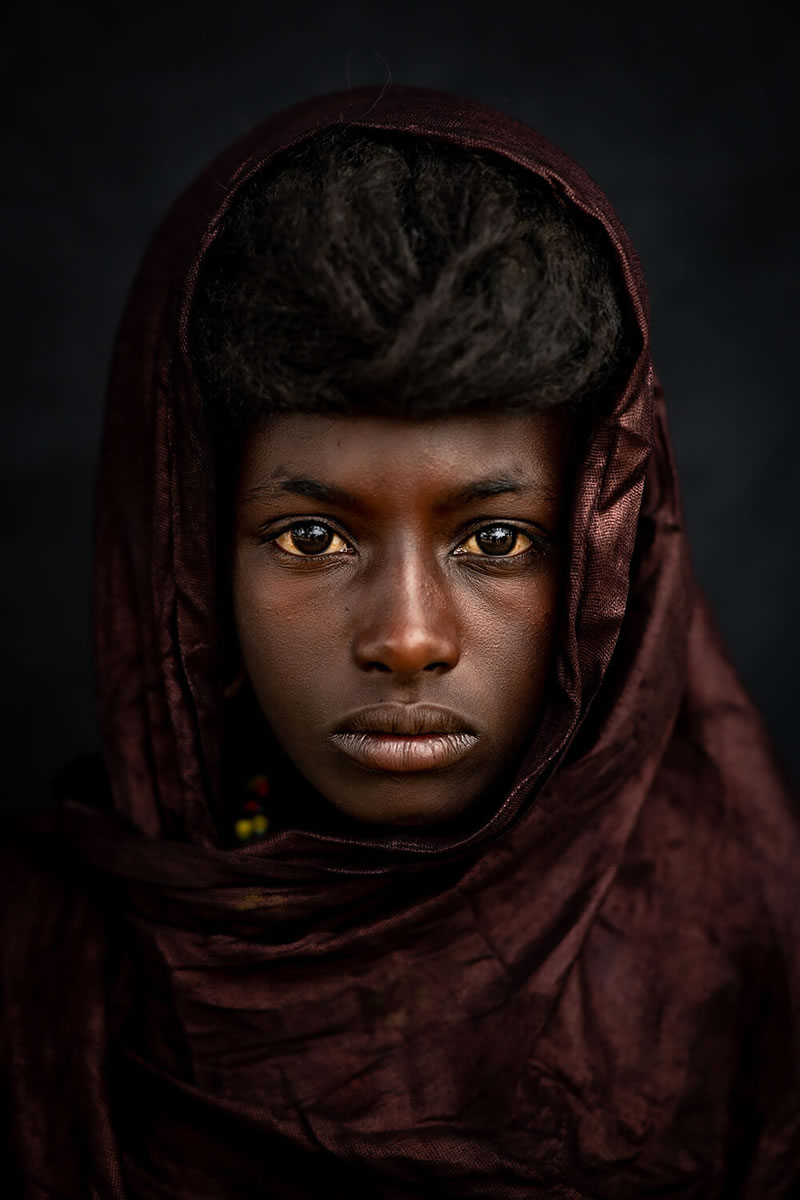
It’s a picture I have taking on the Gerewol festival in Niger. I was Lucky to be one of the few that attended this beautiful festival, where the fulani gather. This beautiful Girl i saw walking and I asked if i could take her pic. She said yes. I have few of her. Also where she is smiling, but the gaze she gave me here on this picture, took my breath away. The serene beauty she is. With those eyes and skin. A real Nomads Rose.
#17 Merit Gallery Winner By Emily Fisher (USA)
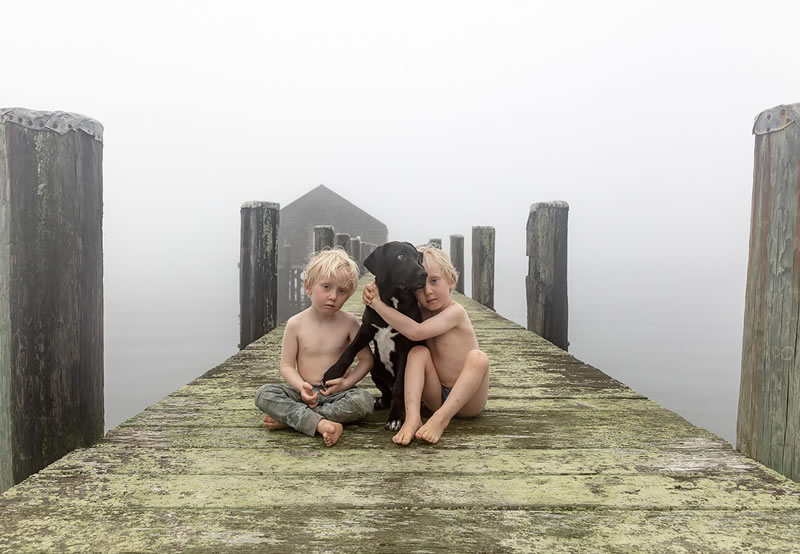
My ongoing body of work Natural Tendencies studies the complex and symbiotic relationship between humans and the natural world. I am acutely aware of the precarious nature of our shifting environment, of the fragility of life and the ephemerality of childhood and I use my photographs to express this sensibility.
#18 Merit Gallery Winner By Laurie Freitag (USA)
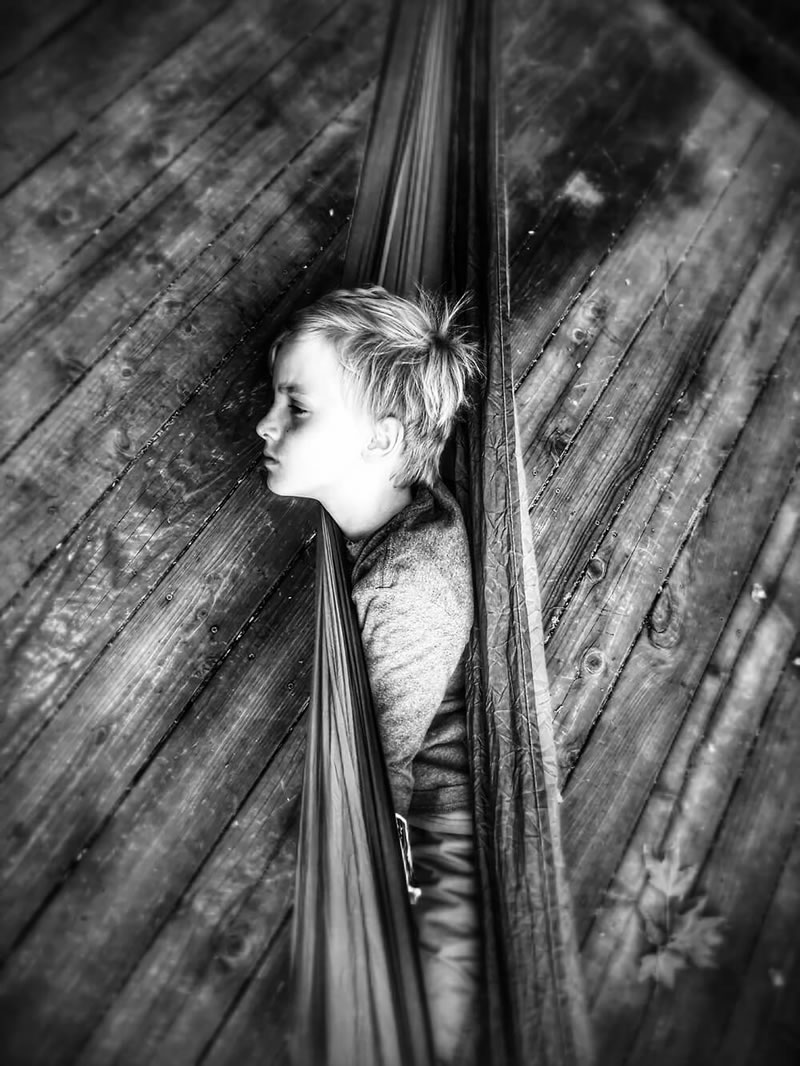
The Hammock from the series, ‘The Lost Years’, the years that most adults can’t remember before the age of seven-years-old.
#19 Merit Gallery Winner By Marc Gaillot (France)
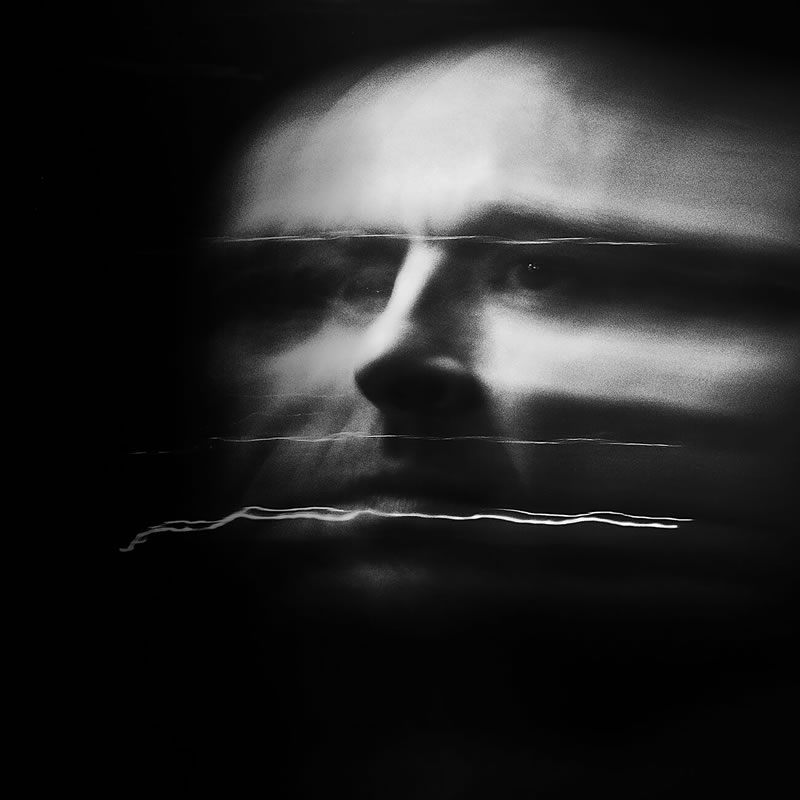
That day, I decided to lock myself in the dark, alone in front of my mirror. My wish is to think outside the box and get original portraits straight from the camera. Camera in black and white with hi contrast mode, a light behind me, a few drops of water well lit. Then much patience to find the right shutter speed, fair exposure compensation and the right movements to follow. Here, a powerful rendering, dark, confusing, frightening, poetic, .. everyone be free to interpret them as he wishes. Virtually no post processing, just a cropping, an adjustment of shadows and whites.
#20 Merit Gallery Winner By Joseph-Philippe Bevillard (Ireland)
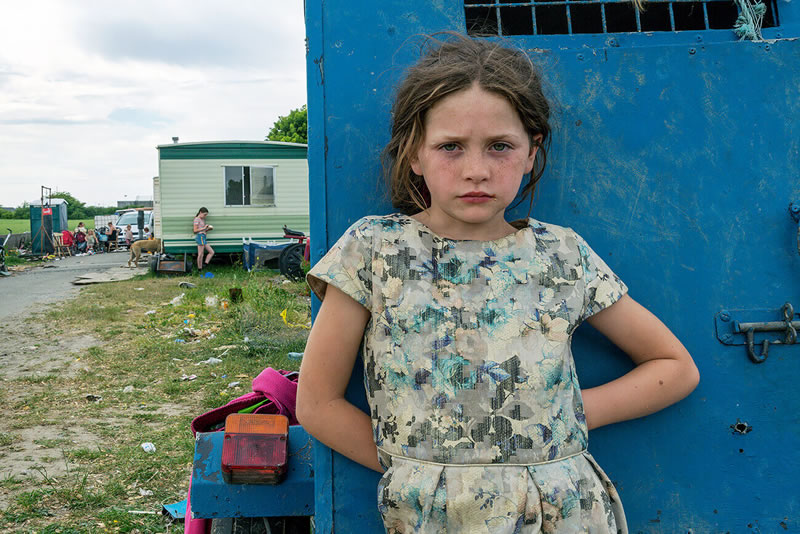
Irish Traveller Biddy leans against a horse transport box for the photograph. She lives in a 3-berth caravan on the roadside campsite with her parents and ten other siblings.
In 2009, I started photographing the Travellers who are an ethnic group at a horse fair in Ireland. I returned to the horse fair the following year to meet them again and to give them some photos I had taken. They gained my trust and invited me to photograph their families and other clans. I am intrigued by their nomadic lifestyle so I decided to visit their caravans, halting sites and roadside encampments. In March 2017, Irish Travellers group have been formally recognized as an ethnic group. Today, they are still facing racism, discrimination, hardship by society and high suicide rates. Travellers are very proud of their culture. I want to represent these people through my photographs. My goal is to continue to work with these families as well as other members that I encounter, and perhaps let the settled people have more understanding of their unique culture.
#21 Merit Gallery Winner By Stephen Hoffman (USA)
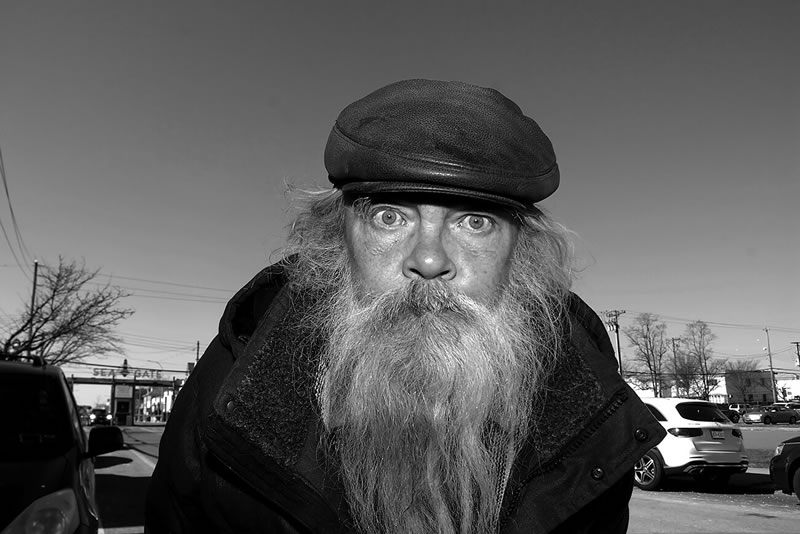
Coney Island Beyond the boardwalk is the title of this project . I am a documentary photographer who has who spent the last dozen years working with and photographing the people that live the housing projects in Coney Island . I mainly like to record people in their homes and places of worship. I give each person a copy of their picture. When I started this project, I worked with film and would come on Saturday morning with a group of pictures and people would line at the basketball court on 24th street to see if I had their photo. Many times, a mother or a sister would say that’s my brother or my grandma and I would give them the picture. The projects are like one enormous family. Everyone knows everyone else. Even though I now work with digital I still make photos to give out . My greatest thrill is to go to someone’s apartment and see my photos hanging on the wall.
#22 Merit Gallery Winner By Rossi Fang (Taiwan)
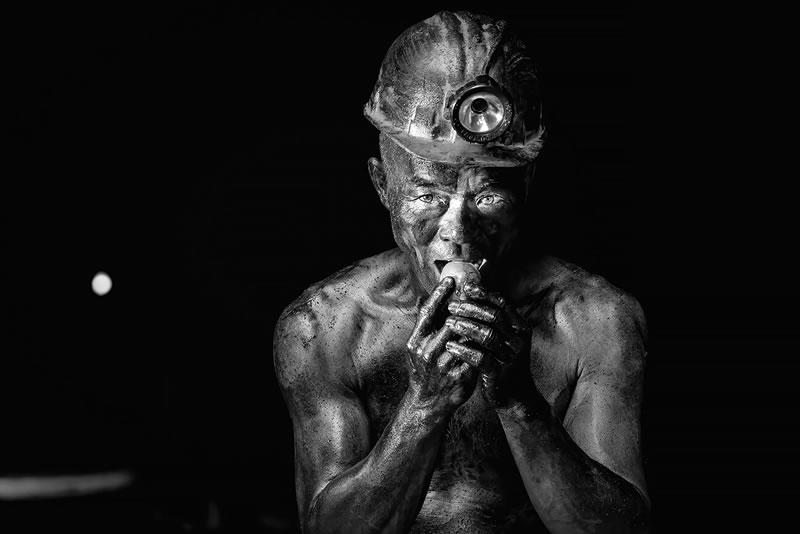
Underpass worker break moment,Eat full the resting and eating snacks is a short time to relax.
#23 Merit Gallery Winner By Eliane Band (Brazil)
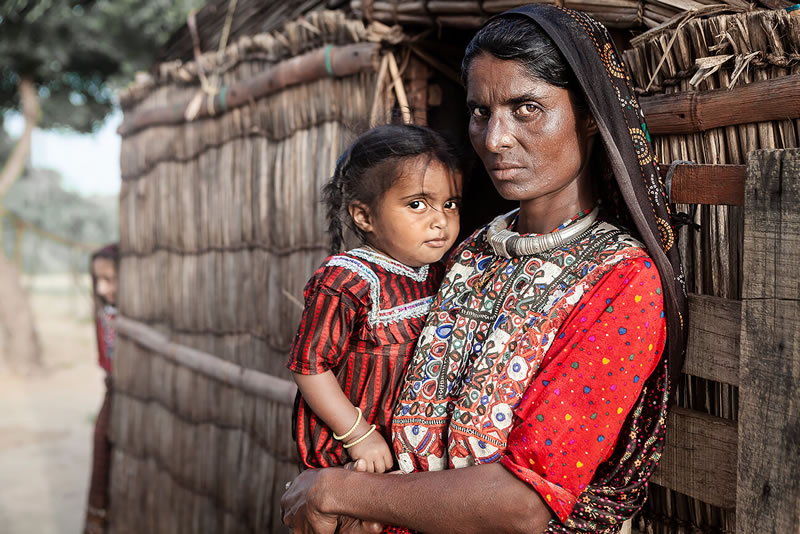
I arrive, dazzled, at a settlement with 20 families from the Jat Fakirani community. In an increasingly pasteurized world, I am moved by the treasure of these moments. In every detail, I see the symbols of a culture that took millennia to form and is rapidly disappearing. From its magnificent traditional houses called PAKHO, through traditional clothing, its intimate relationship with animals, ancestral knowledge, everything is rare, unique and in the process of disappearing.
#24 Merit Gallery Winner By Stephanie Eley (USA)
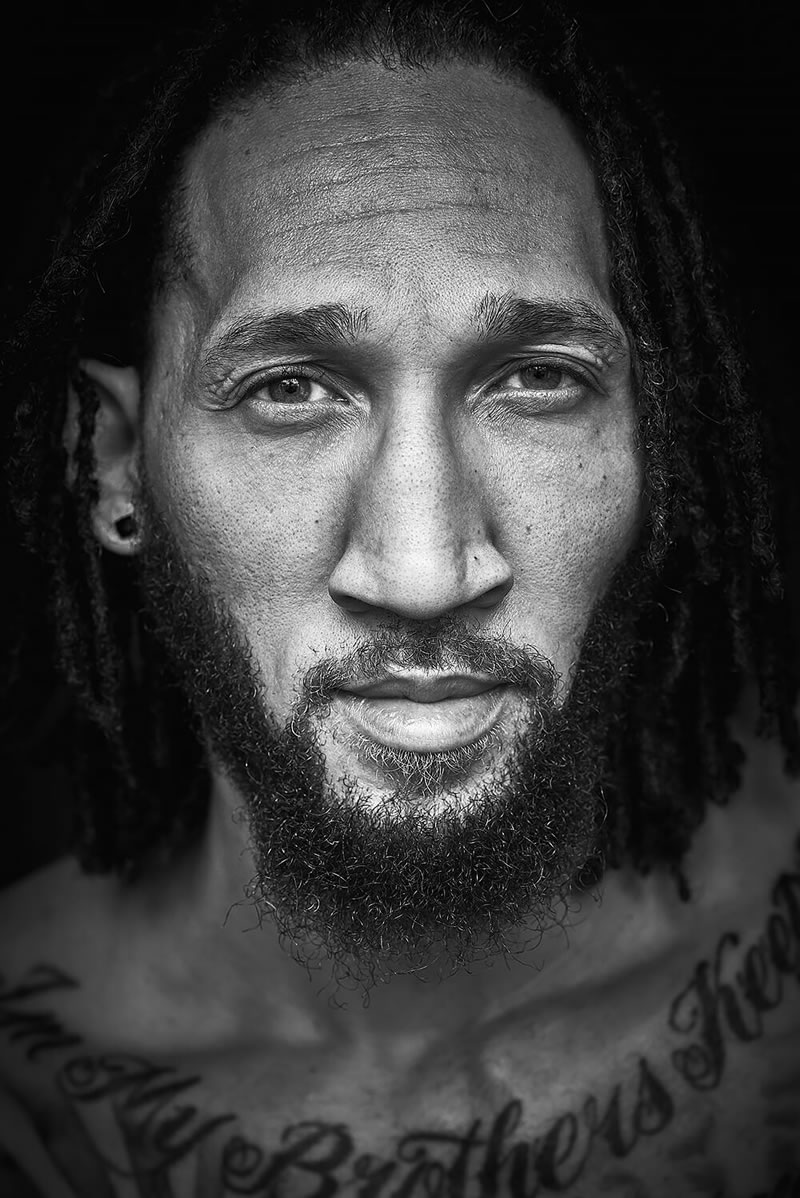
2020 was a year that confirmed a huge divide in the society we live in currently. Why are black men still being vilified unjustly? Stop, look closer, reach out, get to know him. Understand that he is a dynamic being – an educated, kind, and beautiful black man.
#25 Merit Gallery Winner By Christian Bobst (Switzerland)
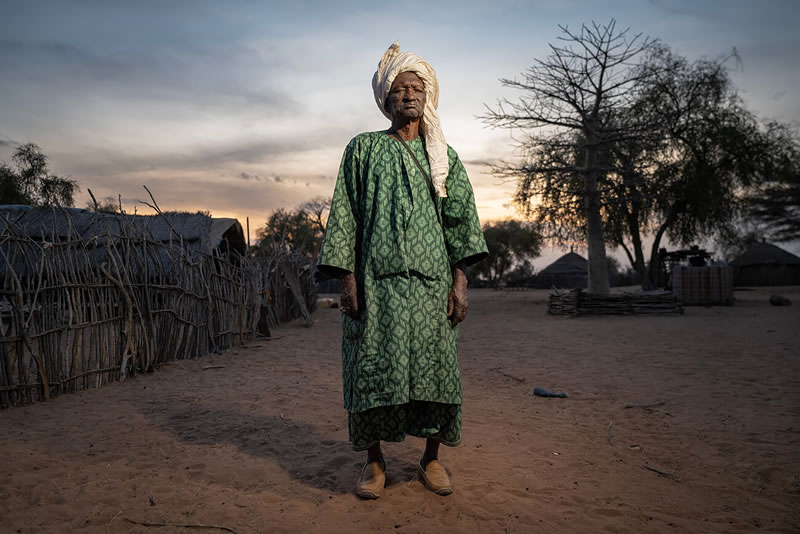
Samba Soknhna Ba, Ferlo Desert, Senegal, 2023; The pastoralists in the Ferlo Desert are an important example of people’s ability to adapt to extreme conditions and the importance of tradition and culture in a changing world. Although they face many challenges, they continue to live their lives and maintain their unique way of life.
Related Articles:
